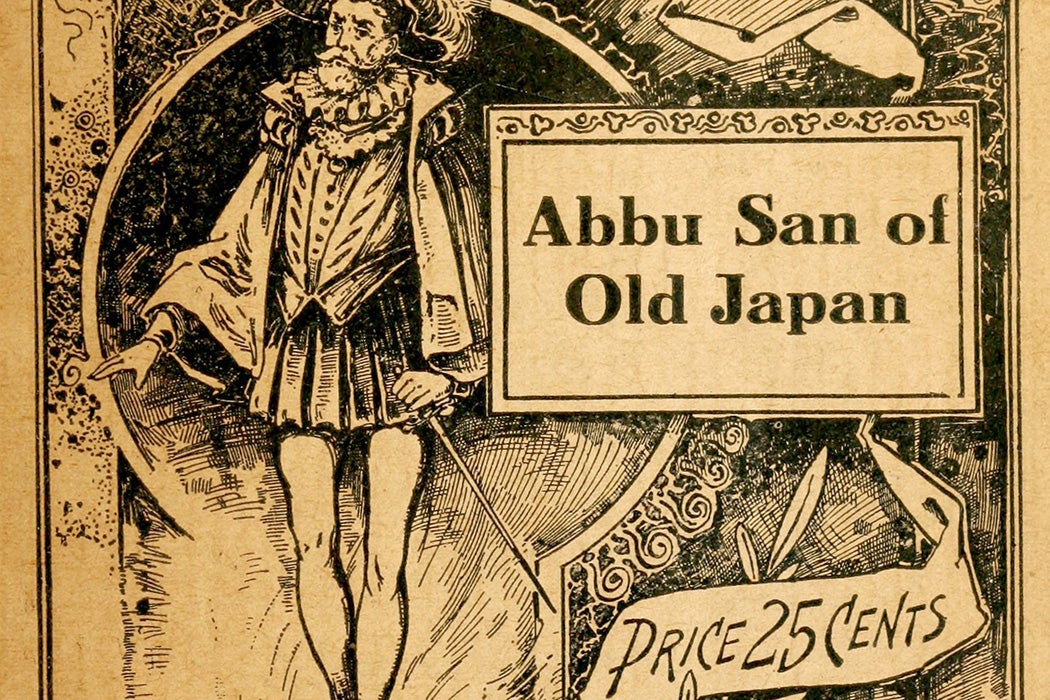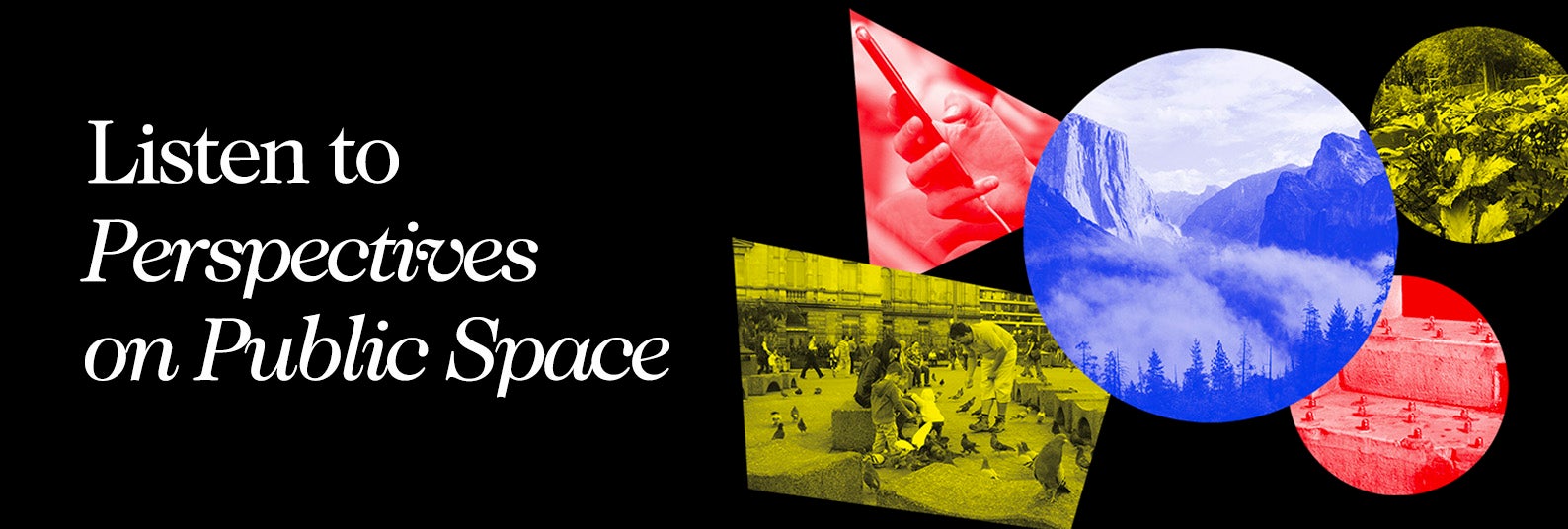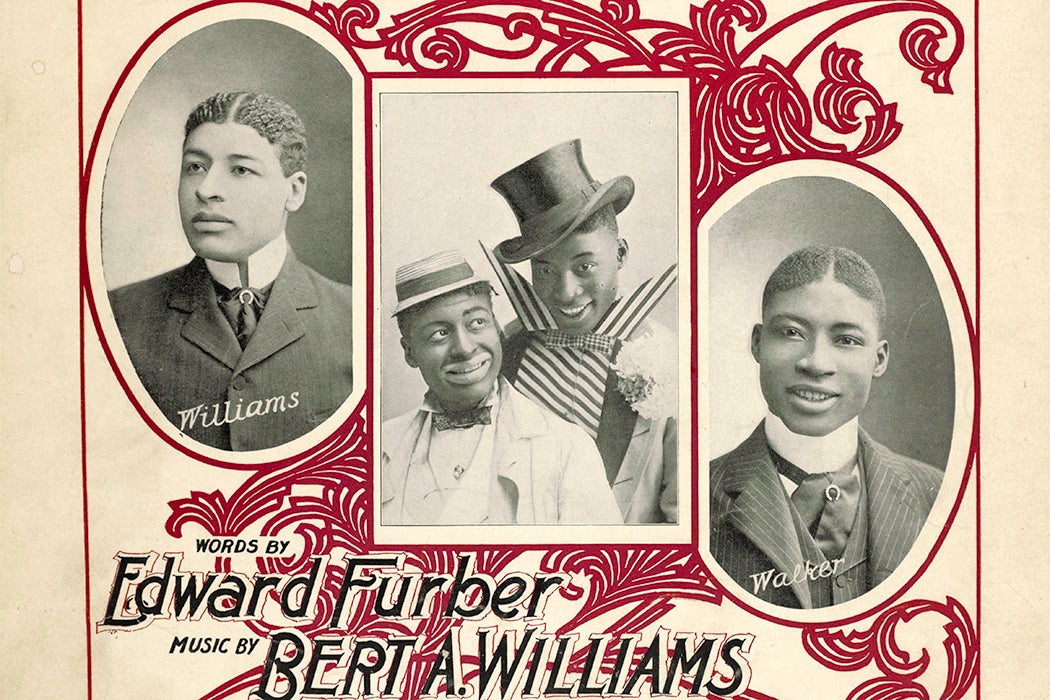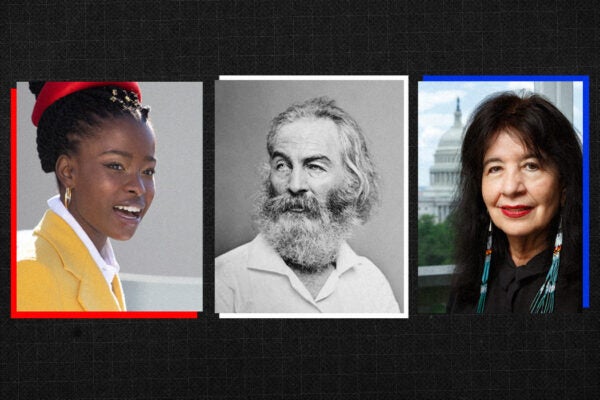In the 1916 amateur theatrical production Abbu San of Old Japan, the role of Aunt Paradise—introduced as a “Black Mammy from ‘Ole Virginny’”—may initially seem as incongruous as it is distasteful. The racist stage tradition of blackface appears out of place in the orientalist setting of a faux Japanese palace, home to characters like Princess Abbu San, Lady Yu-Giri, and Duchess Fuji-No. But the play’s insertion of “a blackface Mammy figure among its many yellowface characters” is part of the long story of American racial narratives, as theater scholar Josephine Lee explains.
“[T]he entrenched racial habits of traditional minstrelsy,” which had progressed from music hall venues to middle-class theaters, “could be effectively modified in order to appeal to broader audiences and to profit from the novelty of the Japan craze” sweeping the West, she notes. Written for performance in all-girls schools, Abbu San of Old Japan “echoed other Japanese- and Chinese-themed student productions popular in the 1890s and after, along with Asian-inspired tableaux vivants and costume parties,” according to Lee. Borrowing from Gilbert and Sullivan’s musical The Mikado as a template, it “emphasizes the allure of exotic oriental femininity and the fascination with ornamental objects, scenes, and costumes,” with a script that calls for kimono costumes and eye makeup.
Aunt Paradise enters the plot as servant to Miss Henrietta Dash, a white American travel writer who “exemplifies the adventuresome spirit of the liberated ‘New Woman,’” as Lee puts it. Lee observes that Aunt Paradise, being depicted as a grotesquely fat character with an insatiable craving for Virginia hams and sugared yams, “establishes a more sustained contrast between the refined and decorative world of Japan and a black female character who is embodied in grossly physical ways.”
Abbu San of Old Japan is by no means unique in blending Black and Asian racial stereotypes to entertain white American audiences. This trend was seen in minstrel shows that had acts titled “Ragtime in the Orient” or “The Flying Black Japs.”
“Minstrelsy incorporated both traditions, using acrobats and ‘Japaneasy’ comic absurdities as well as more refined characterizations, settings, and themes influenced by Japanese styles,” writes Lee. In fact, Thomas Dilward, an African American dwarf who performed with various integrated and all-Black troupes in the nineteenth century, made a career under the moniker “Japanese Tommy.”
More to Explore
When Black Celebrities Wore Blackface
Even though Dilward’s acts didn’t overtly reference any Japanese material, Lee suggests that “[i]t is likely that [he] was capitalizing on both the general interest in US–Japan relations and the specific social success of another ‘Japanese Tommy’” named Tateishi Onojirō Noriyuko, who was a teenage member of a Japanese diplomatic entourage to the United States in 1860. The media sensation around Onojirō “may well have also made him an inspiration for Dilward’s act,” given that Japanese figures were regularly characterized as “charming” and “little.”
“Using his short stature to style himself as the diminutive and witty ‘Japanese Tommy’ allowed Dilward an association with elite society’s curiosity about Japan,” writes Lee.
Similarly, roles like Henrietta and Abbu San “stress the liberating potential for young white women to enact as well as explore ‘Old Japan’ through acts of yellowface impersonation,” she argues. “The notable exception, of course, is in the role of Aunt Paradise.”
Weekly Newsletter
Even so, Aunt Paradise offers a sharp social critique of the American orientalist craze for all things Japanese. She “constantly interrupts the overall fantasy of ‘Old Japan’ with the familiar stuff of American blackface minstrel comedy,” Lee points out, and “[h]er lines also satirize the fascination of white Americans with Japanese customs and commodities.” While Henrietta is taken by how “the people are so charming, so naive” in Japan, Aunt Paradise complains more pragmatically that “I jes’ naturally loses ma jurisprudence” sitting on the floor.
Though written as a demeaning, anti-Black caricature, Aunt Paradise perhaps reveals more than the playwright intended, when she grouses, “I don’t like yaller folks nohow.”








